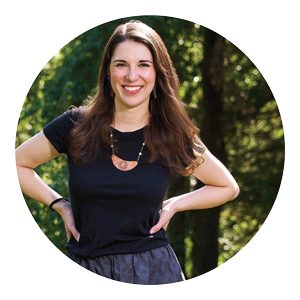Raising Awareness Around Violence Against Indigenous Women in Nebraska
By Wendy Townley
Photo by Ron Coleman, C4 Photography
The national statistics surrounding violence among Native American populations—of all ages—in the United States are staggering.
More than 80 percent of American Indian and Alaskan Native women and men have experienced some sort of violence in their lifetime. Among Native women in particular, 56 percent lived through a violent event in a single year.
In instances of rape or violence by an intimate partner, 55 percent of Native American women live with such trauma. The total of Native American women who experience both violence and stalking drops only slightly, to 48 percent.
Overall, Native Americans in general are nearly three times as likely to experience violent crimes, and at least two times as likely to experience rape or other sexual assault crimes.
Such data has concerned Native American communities for decades. But one Nebraska woman’s efforts are designed to be a catalyst for not just candid conversation, but also change.
In her role as founding executive director of the Nebraska Tribes Addressing Violence Coalition (NETAV), Kirby Williams strives to engage Nebraskans on this crisis through education, outreach, advocacy, training and more.
Williams is a citizen of the Cherokee Nation of Oklahoma, where she was raised on the tribe’s Oklahoma reservation. After high school, in 2015, Williams attended Missouri State University, where she earned a bachelor’s degree in psychology, followed by a master’s degree in clinical psychology just three years later. (Marriage brought her to Omaha, where she now lives with her family.)
The coursework, research, and certification while in college—when paired with her heritage and her own personal story—buoyed Williams’ interest in Native American violence prevention and advocacy.
Williams identifies as a survivor of intimate partner violence and sexual assault. Like so many young women, Williams found herself in an abusive relationship while a college student.
“And that really shifted my whole world,” Williams said. “It sent my life into an upheaval. And so I was now trying to figure out how to heal.”
As a Native American woman, Williams said she had trouble finding culturally relevant resources as she waded through the trauma and its impact on her own life. While healing, she started considering what more could be done for other Native Americans in similar situations. In 2022, following years of Native American violence advocacy and community service, Williams founded NETAV.
The coalition’s mission statement speaks volumes of the crisis and the critical assistance NETAV strives to provide the Native American community: to support and strengthen the prevention of and response to domestic violence, sexual assault, stalking, elder abuse, dating violence and human trafficking in Nebraska.
As noted by NETAV and confirmed by national statistics, violence among Native Americans isn’t limited to a single generation.
“When we talk about intimate partner violence, we’re talking about dating violence, domestic abuse, sexual assault, stalking, human trafficking,” Williams said. “All of that feeds into the missing and murdered Indigenous people crisis, which is how I like to describe it. You can’t really work on one without the other.”
Williams points to recent research by the Urban Indian Health Institute. The study concluded that Nebraska ranks seventh in the highest number of cases of missing and murdered Indigenous people. Statewide in 2024, nearly 40 cases have been reported. In the remaining months of the year, there could likely be more.
The problem of violence and missing Native American people unfortunately isn’t anything new, Williams said. “This has been a crisis that we’ve been experiencing since the time of colonization.”
Although Native American women and men alike experience varying forms of violence today, it’s particularly searing when learning more about a Native American woman’s value prior to colonization, she said.
“We didn’t have these rates of violence (before colonization). Most of the tribes had an inherent balance between men and women. Everyone was working for the betterment of the tribe as a whole, and violence was an incredibly shameful act. It was not to be tolerated. When a survivor came forward, a survivor was believed.”
“In fact,” she added, “violent men were seen as being incapable of being leaders.”
After colonization, Williams said a “hyper-sexualization” of Native American women became the norm. A timely and unfortunate example: skimpy Halloween costumes as Pocahontas or a Cherokee princess.
But despite the negative statistics and harmful stereotypes, Williams said she has reason to hope. She needs only to look to Native American youth today, and the lives she and NETAV can continue to protect and support.
“I’m very passionate about working with our Native American youth, especially because they are so smart. Our child-rearing is very inclusive, very nonviolent. It’s very loving and nurturing. Our kids stay with us for long periods of time. We believe our children should be seen and heard. They are teaching us as much as we are teaching them,” she said. “If we protect them and help them, they are going to thrive. They are going to create a better world.” W

